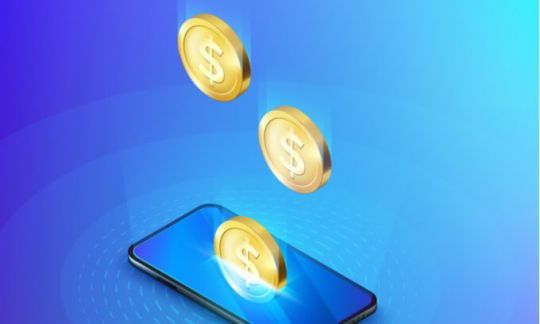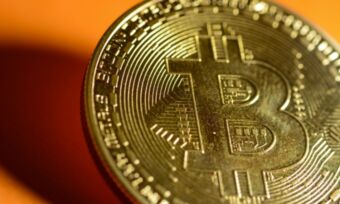Central Bank Digital Currency: What is CBDC and will Australia be launching eAUD?

The terms Central Bank Digital Currency and eAUD have been in the headlines of the financial press. But what are they and what do they mean for the average Aussie consumer? Will Australia ever have a national digital currency and say goodbye to physical cash forever? Here’s what the experts say.
What is a Central Bank Digital Currency (CBDC)?
A Central Bank Digital Currency (CBDC) is a potential new form of digital money, according to the Reserve Bank of Australia (RBA). This digital money would change hands in the form of a digital token instead of cash or an electronic version of cash such as via a traditional credit card. These digital tokens would be officially issued and backed by a central bank, which means they could be universally accepted and used as a form of currency by banks, businesses and consumers alike. Users may be able to use technology such as a digital wallet to store and use this type of digital currency. If implemented, it is likely that a CBDC “would be convertible at par with other forms of money, and in all likelihood it would also be specified to serve as legal tender”, according to the RBA’s Head of Payments Policy, Dr Tony Richards.
Lisa Wade, incoming CEO of blockchain technology company DigitalX and former Project Atom CBDC lead, told Canstar that a CBDC would be essentially the same as the currency we use now, but with a few key differences.
“Right now, let’s say I buy something from you with a $5 note,” Ms Wade said. “I give it to you and you put it in your wallet. The difference is that with a CBDC, that note has a computer program in it and that program can talk directly to your wallet.”
That program, for example, could give your wallet information about the note’s value, where it came from and other essential verification information, reducing the need for banks to make verification checks and allowing instant transfers from the customer’s account to the seller’s wallet. In the current system, Ms Wade noted there are a number of electronic ‘handshakes’ that occur between banks’ and payment system companies’ computer systems before a transaction is finalised.
She said if you were to buy a home with a CBDC, on the other hand, there would be no need for a settlement procedure involving the numerous steps banks and solicitors currently to perform to verify and transfer finance for the purchase.
In this scenario, the house contract would be a computer program.
“The house (contract) and the money would talk. The house would say ‘Hey, money, you give me the amount you owe me’, and the money would say ‘Hey, house, transfer ownership to me’, and these two conversations would happen at the same time.
“The benefits are faster settlement times and less risk as the money is moving only when the asset has been confirmed, and it’s a more transparent process with less risk of human error.”
What is CBDC experiment Project Atom?
In 2021, the RBA conducted an experiment using a CBDC for wholesale banking transactions in Australia, called Project Atom. It allowed banks to pay each other using a digital currency backed by the RBA. The report on the project stated that the experiment showed using a CBDC could increase efficiency, assist with risk management and boost innovation in wholesale financial market transactions. However, the report also highlighted a number of areas for further exploration before a system could be developed and launched, including technological and legal issues.
What is eAUD?
If Australia were to adopt a CBDC), RBA governor Philip Lowe suggested (in December, 2021 at the Australian Payments Network Summit) that it could be called the eAUD.
Traditional currency and a CBDC: What are the similarities and differences?
For the average Aussie who uses a card or phone to make a purchase, it seems there might not be a large, noticeable difference between our traditional currency (Australian dollars or AUD) and a Central Bank Digital Currency (CBDC or eAUD) when making purchases, according to the RBA. Theoretically, providing that the electronic payment machines at retailers are programmed to deal with CBDC, the digital currency could be used in the place of traditional currency for electronic payments.
However, there are some other similarities and also some differences between traditional money and a CBDC to explore.
How is a CBDC different from traditional currency?
The differences between traditional currency (AUD in Australia’s case) and a CBDC include:
- how it is managed and tracked: traditional currency is typically managed via database systems housed in ‘centralised’ facilities. For example, account information for a particular bank is kept by that bank in their centralised database. When someone wants to pay someone electronically, there are a number of systems that have to be accessed for this to happen, such as the customer’s bank, the payments platform provider (such as EFTPOS or Visa), and the retailer’s or recipient’s bank, so that certain verification information can be provided.
However, a CBDC could use a decentralised storage system, using Distributed Ledger Technology (DLT). This technology allows financial data to be securely spread or stored across many sites and not held in one ‘central’ place. Blockchain is a form of DLT. Using DLT could cut down on transaction times, as it would bypass the need to go through multiple centralised databases to access the relevant info to enable payment information to be verified, according to the RBA. The ‘digital token’ would already have that information embedded into it.
- how it can be used for commerce: while a CBDC could be used like a traditional currency, it would not exist in a physical form like cash. If they wanted to pay someone in cash, a user would have to convert the digital currency to cash currency such as Australian dollars, deposit it in their traditional bank account, and then withdraw the cash from a teller or ATM.
- how a user could store it: The digital currency could be in the form of a digital token, which Dr Lowe has said could be stored in a digital wallet or an app. Digital transactions could take place inside the wallet or app. While traditional currency can already be stored on a digital wallet, at the moment these wallets are typically operating via a bank card (such as a credit or debit card) to allow transactions to work. A digital wallet containing digital tokens would likely not need a bank card to enable payments – the transaction could happen straight from the wallet (potentially doing away with credit card fees and merchant fees).
How is CBDC similar to traditional currency?
The similarities between traditional currency and a Central Bank Digital Currency include:
- how its value is preserved: The traditional Australian currency (AUD) is a ‘fiat currency’, which means that our central bank, the Reserve Bank of Australia (RBA), ‘backs’ it, or ensures that there are checks and balances in place to keep its value – what a certain amount of money can buy – relatively stable. That, in turn, means that Australians can trust it enough to use it for everyday commerce, like buying groceries and paying their staff. A CBDC would also be issued and backed by the RBA, just like the traditional currency, according to the RBA.
What is the point of a central bank digital currency?
A central bank-backed digital currency is likely to be in demand as the world of investing converts to use more DLT such as blockchain, according to Dr Richards. A CBDC is one of many different types of digital money, with other examples including cryptocurrency such as Bitcoin, and stablecoins. However, according to Dr Richards, some cryptocurrencies have a reputation for volatility – they can go up and down in value very quickly over a short period of time. He predicts there may come a time when “all sorts of financial assets – bonds, equities, derivatives, commodities, etc. – can be tokenised and transacted on blockchains”, too. He believes that investors who want to sell their investments will want to be paid in a stable digital currency. And that’s where a CBDC comes in, as it would be essentially a digital fiat currency.
Or, as he puts it: “So I expect that tokenised asset transactions will typically be settled in fiat currencies, such as the Australian dollar, the US dollar, the Euro, etc. And I would expect that the fiat currency instruments used will be riskless or near-riskless; that is, they are likely to be CBDCs or very safe stablecoins issued by regulated entities.”
Ms Wade said that the future of digital money was exciting, as it could allow the Internet of Things (smart devices connected to the internet) to transfer money automatically. For example, if you were to run out of milk, your smart fridge could be set to automatically send an order to a grocery delivery company, and to pay for the delivery. Or, if you had a smart appliance such as a washing machine, the appliance could alert the manufacturer of a problem, order a part and a service mechanic automatically, and finalise payment for the service at the same time.
What is the difference between CBDC and cryptocurrency?
According to the RBA’s Dr Richards, cryptocurrencies and Central Bank Digital Currencies differ in a number of ways.
Cryptocurrencies:
- have their value determined by the open market (what other investors will pay for them) and have “no reference to any fiat currency and no asset backing”;
- are measured in their own ‘unit’ values which vary from cryptocurrency to cryptocurrency;
- are generally not regulated by governments, but by software arrangements (possibly decided by “some form of consensus emerging to change the pre-existing software protocols for the system”);
- transactions are verified by various means determined by the cryptocurrency system.
Central Bank Digital Currencies:
- have their value backed by central bank, like a fiat currency, and are “fully convertible at par” into other forms of money;
- are measured in predetermined units like a fiat currency;
- are part of a centralised governance arrangement;
- have ‘trusted entities’ to verify transactions.
Are there any central bank digital currencies? What countries have launched a CBDC?
Dr Richards states that although “essentially all central banks are doing work in this area”, the only countries to have launched a CBDC so far are the Central Bank of the Bahamas and Eastern Caribbean Central Bank, which is the central bank for seven countries in the Caribbean (although the latter is a pilot project). China is in the “advanced stages” of testing a “digital yuan for household use and it seems increasingly likely that it will move to full issuance”, he said. No “high-income economies” have launched a CBDC to date, he said, although he remarked that the central banks in Sweden and the Eurozone have been considering it.
Will Australia be getting a CBDC or eAUD?
While the RBA has conducted an experiment in a wholesale CBDC, which involved banks swapping CBDC digital tokens with banks and the RBA for a time, it appears Australian consumers will have to wait for their turn at using a CBDC or eAUD. But maybe not for long.
The RBA’s Tony Richards, in a speech to the Australian Corporate Treasury Association prior to his retirement from the RBA, said that “Reserve Bank staff have also not been convinced to date that a strong policy case has emerged in Australia for a CBDC”. He said this country already has “a wide range of safe, convenient and low-cost payment services”. But he also said the bank “acknowledged the argument” that a fiat digital currency would help to maintain trust in the financial system as the world converted to digital investing, and that it may also help to open the payments market to more competition.
Dr Richards said the bank was “stepping up” its research around a CBDC, and “is looking to do experiments around retail CBDC”.
“I can assure you that work on the future of payments will be a high priority for the Bank in coming years as part of its responsibility to ensure that there are safe forms of money that the public can trust, to foster stability in Australia’s monetary, financial and payment systems,” he said. “It will be fascinating to see how things evolve over the next decade.”
This article was reviewed by our Sub Editor Tom Letts before it was updated, as part of our fact-checking process.

A journalist for more than two decades, Amanda Horswill has reported on a galaxy of subjects, including property, lifestyle, hyper-local news, data journalism, the Arts and careers.
She’s served as the Editor of Brisbane News, Deputy Features Editor for The Sunday Mail, Deputy Editor – Digital at Quest Community News, and a host of other senior positions at News Corp, prior to joining Canstar.
Amanda is fascinated with the ever-changing world of finance. A passionate believer in the motto “knowledge is power”, she strives to translate the news into practical information that will help readers make informed decisions about their future. While at Canstar, her work was regularly referenced by publishers such as the Sydney Morning Herald , The Age, The New Daily and Yahoo Finance.
Amanda holds a Bachelor of Arts (Journalism, Media Studies and Production, and Public Relations) and a Graduate Certificate in Editing and Publishing, from the University of Southern Queensland.





